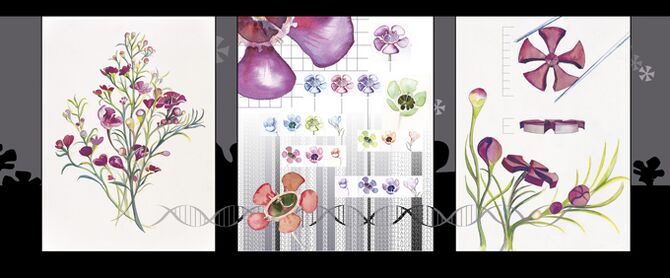20.109(F11): Mod 3 Day 6 Oral presentations
Guidelines for your 20.109 research proposal
Writing a research proposal requires that you identify an interesting topic, spend lots of time learning about it, and then design some clever experiments to advance the field. It also requires that you articulate your ideas so any reader is convinced of your expertise, your creativity and the significance of your findings, should you have the opportunity to carry out the experiments you’ve proposed. To begin you must identify your research question. This may be the hardest part and the most fun. You can start by finding a handful of topics to share with your lab partner. Together you should discuss and evaluate the topics you’ve gathered. Consider them based on:
- your interest in the topic
- the availability of good background information
- your likelihood of successfully advancing current understanding
- the possibility of advancing foundational technologies or finding practical applications
- if your proposal could be carried out in a reasonable amount of time and with non-infinite resources
It might be that not one of the topics you’ve identified is really suitable, in which case you should find some new ideas. It’s also possible that through discussion with your lab partner, you’ve found something new to consider. Both of these outcomes are fine but relatively quickly you and your partner should settle on a general topic or two so you can begin the next step in your proposal writing, namely background reading and critical thinking about the topic.
A few ground rules that are 20.109 specific:
- you should not propose any research question that has been the subject of your UROP or research experience outside of 20.109. This proposal must be original.
- you should keep in mind that this proposal will be presented to the class, so try to limit your scope to an idea that can be convincingly presented in a ten minute oral presentation.
Once you and your partner have decided on a suitable research problem, it’s time to become an expert on the topic. This will mean searching the literature, talking with people, generating some ideas and critically evaluating them. To keep track of your efforts, you should start a wiki catalog on your OpenWetWare user page. How you format the page is up to you but check out the “yeast rebuild” or the “T7.2” wiki pages on OpenWetWare for examples of research ideas in process.
As you become more expert on your research topic, you'll read a lot about it and you may feel
(a) like there's too much to read
(b) like you have too many ideas and no way to map or prioritize them
(c) like you don't understand what you're reading
(d) all of the above.
One of the best ways to help frame the problem for yourself is to discuss it with someone new. You will have an opportunity during lab to talk with a person from another lab group. This person will offer you a fresh ear to consider your proposal. You can rework your proposal based on the conversations you've had.
presenting your project to your classmates
You and your partner should prepare a 10 minute powerpoint talk that describes the research question you have identified, how you propose to study the question and what you hope to learn. A general outline your research proposal presentation is:
- a brief project overview
- sufficient background information for everyone to understand your proposal
- a statement of the research problem and goals
- project details and methods
- predicted outcomes if everything goes according to plan and if nothing does
- needed resources to complete the work
- societal impact if all goes well
On the day you present your team should print out and bring four copies of your powerpoint slides. Black and white is fine and you can print more than one slide per page if you like. You should also write and print out your "talking points" into the comments box of each of the slides you'll present. These are speaking notes for your presentation. They should include the words you'll use to describe each slide and the transitions you've planned between them. For example from last year's presentations, one slide's talking points were:
As you can see from this image, taken from a review on hydrocarbon metabolism in marine bacteria, the alcanivorax species is the first to grow in population after an oil spill, and its growth correlates with a decrease in aliphatic hydrcarbons.
- After most alkanes have been degraded, the Cycloclaticus species blooms while aromatic hydrocarbon levels decrease
- One thing to note is that as soon as they have done their job, both species return to their normal population levels.
- One problem with using Alcanivorax and Cycloclasticus to clean oil spills, however is that they can only be found in specific locations
The next slide (transition statement) began: To remedy this, we decided to look into other bacteria into which we could move the hydrocarbon metabolic pathways
